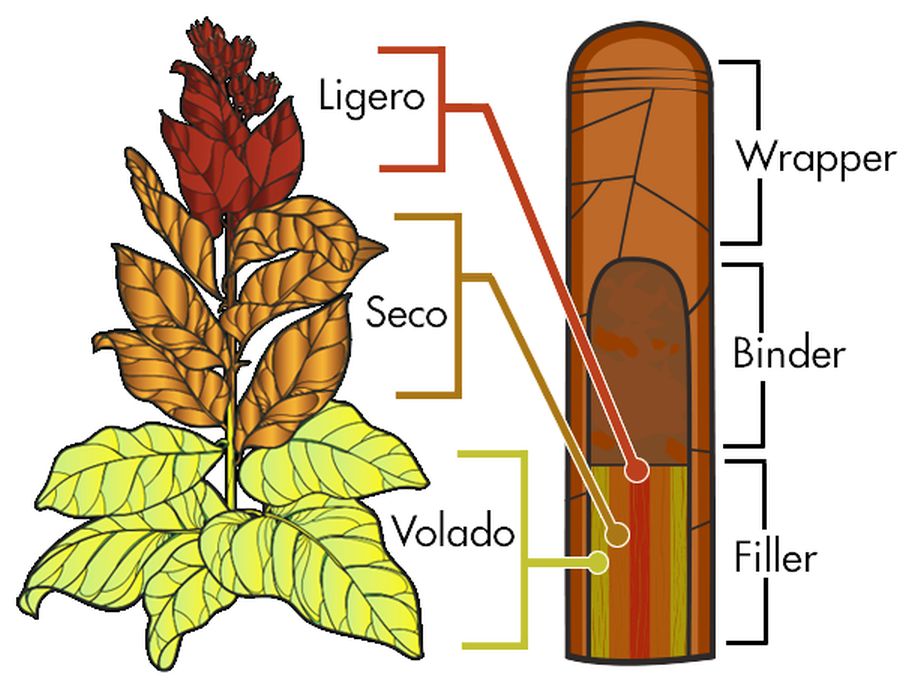The leaves that clothe the body
It takes up to six types of tobacco leaf to make a Habano, each type specially grown and prepared for its purpose.
All the flavour differences in cigars come from minor variations of the three layers of the body:
Filler
Two, three or four types of leaf are blended to form the filler or “tripa” – the source of the rich flavours and aromas that immediately distinguish a Habano from the rest.
The tobacco leaves in the filler usually come from the top of the Ligero plant.
Dark and oily, Ligero is a full-flavoured and slow-burning leaf that adds strength to the blend.
Based on the type of cigar, it can be made from a single batch of tobacco, giving the cigar a uniform taste, or it can be a well-blended selection of different tobacco primings.
There is a multitude of batches used and expertly blended in order to create a certain aroma, which is why the blending recipes of many producers are well-kept secrets to preserve the prestige of the cigars.
The filler tobacco can be pressed in various types, granting it several characteristics. If the cigar has a higher tobacco density, the draw is fuller and the smoke strength is higher, while a loosely pressed cigar is lighter, and the draw is easier.

Binder
The binder or “capote” is the special leaf that wraps around the leaves of the filler, defining the shape of the Habano and perfecting its smoking quality.
This is a robust tobacco leaf that has a texture reminiscent of parchment. It often plays a role in guiding the burn.

Binder leaves are harvested from the middle of the tobacco plant Seco.
Seco is medium-flavoured and the most important leaf for aroma. It is lighter than Ligero in both colour and flavour.
Genuine Cuban cigars are burned evenly, and slowly, leaving ash that looks like salt and pepper.
Wrapper
The wrapper or “capa” is the exquisitely thin and supple leaf that forms the outer surface of the cigar. It is a silky leaf of tobacco that burns well.

Wrapper leaves come from the bottom of the tobacco plant, Volado.
Volado is a light-flavoured leaf, especially valued for its combustibility.
The wrapper contributes little to the flavour of a Habano, but it stands as the ultimate symbol of the cigar’s perfection.
Connoisseurs can usually tell where the plant was grown and even the tobacco varieties based on some regional variations.
The way a cigar looks and feels on your lips totally depends on the wrapper.
An attractive wrapper is a thin and delicate leaf with few visible veins and a smooth texture.
From the wrapper, you can tell the strength of the taste and the ageing period based on its colour. The lighter the colour, the lighter the cigar’s taste and the stronger the darker.
The wrapper also holds a lot of the aroma of the cigar.
Many cigar lovers use the cold draw technique to taste the cigar before they light it up. The aroma they taste as they draw in from the cigar is mostly from the wrapper and not necessarily from the tobacco.
For the making of Habanos, every leaf is grown in Cuba, and you will not find such tobacco in cigars that are not Habanos.
Earlier articles:
Cohiba: Fidel Castro’s all-time favourite cigar

